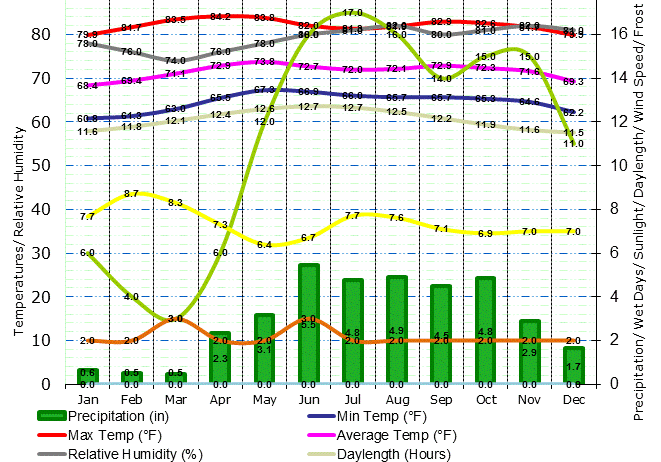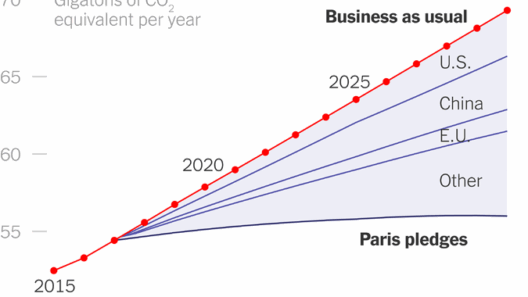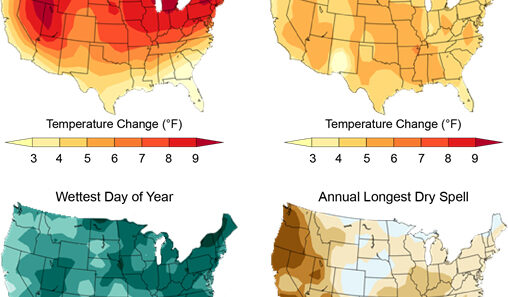The climate in Venezuela is a multifaceted phenomenon influenced by diverse geographical features, ranging from the Caribbean coast to the soaring Andes Mountains and the expansive Amazon rainforest. Predominantly characterized by tropical heat and abundant rainfall, the climate offers a unique tapestry of weather patterns that captivate both scientists and nature enthusiasts alike.
Venezuela is predominantly situated in the tropics, which unequivocally establishes its climate as primarily tropical. The country experiences two main seasons: the wet season and the dry season. The wet season typically spans from May to November, marked by significant precipitation, while the dry season generally occurs from December to April. However, variations exist across different regions, leading to a complex climatic landscape that reflects the country’s diverse topography.
In the coastal regions, where the Caribbean Sea kisses the shores, the climate is relatively humid and warm. Temperatures rarely fluctuate drastically, typically hovering between 25°C and 35°C (77°F to 95°F). The proximity to the sea mitigates temperature extremes, although humidity levels can rise substantially. Tropical storms and hurricanes are infrequent, but the coastal areas remain vulnerable to the aftereffects of such weather phenomena, resulting in increased rainfall during specific seasons.
Venturing inland toward the Andes, the climate transforms dramatically. The Venezuelan Andes, home to some of the highest peaks in the country, create a cooler and more temperate microclimate. Elevation plays a crucial role in climate variation, leading to cooler temperatures as one ascends. Areas such as Mérida can experience temperatures that drop to around 15°C (59°F) at night. This remarkable climatic diversity provides a sanctuary for unique flora and fauna adapted to these cooler conditions.
Furthermore, transitioning from the Andes to the south unveils the vast expanse of the Amazon basin. The delta and rainforest regions exhibit a characteristic tropical rainforest climate. Here, the rainfall is copious, often exceeding 3,000 mm (118 inches) annually, accompanied by consistently high humidity. Temperatures in these areas typically range from 20°C to 30°C (68°F to 86°F). The sheer volume of precipitation supports verdant ecosystems, where biodiversity flourishes, encompassing a plethora of plant and animal species, some of which remain undiscovered.
A critical aspect of Venezuela’s climate is the phenomenon known as El Niño, which exerts a significant influence on weather patterns across the region. During El Niño events, the country can experience either excessive rainfall or intolerable drought conditions, leading to challenges for agriculture, water supply, and electricity generation. These anomalous conditions can exacerbate existing vulnerabilities in local ecosystems and human livelihoods already strained by climate change impacts.
Climate change poses additional threats to Venezuela’s delicate balance. Global warming is expected to further intensify the existing climatic variables, altering precipitation patterns and accelerating the melting of glaciers in the Andes. Such changes can lead to adverse effects on watershed management, agricultural productivity, and food security throughout the nation. The potential for increasing heatwaves and extreme weather events is an alarming reality that necessitates urgent attention to climate resilience strategies.
The agricultural sector in Venezuela is particularly susceptible to the vicissitudes of climate change. Farmers often rely on the predictable patterns of wet and dry seasons for cultivation, but erratic weather can devastate crops. Climate-smart agriculture presents a viable solution to mitigate these risks, allowing farmers to adapt their practices to the shifting climate while ensuring food security and sustainable livelihoods.
Despite these challenges, Venezuela remains a country rich in natural resources and biodiversity. Preserving ecological balance is essential for combating the adverse effects of climate change. Initiatives aimed at conservation, reforestation, and sustainable land use have gained traction among various grassroots organizations and environmental activists dedicated to protecting Venezuela’s unique environment.
The contribution of urban centers to climate issues cannot be overlooked. Rapid urbanization has led to increased industrial activity, which can contribute to air pollution and greenhouse gas emissions. Moreover, cities like Caracas face unique challenges related to heat management and urban planning. The heat island effect can exacerbate local temperatures, making urban areas less comfortable during hot months. Sustainable urban development strategies are critical to ensuring that cities adapt to changing climatic conditions while reducing their carbon footprints.
In conclusion, the climate in Venezuela is an intricate mosaic of tropical heat and Amazonian rains, shaped by geographical diversity and influenced by global climatic patterns. While the country confronts numerous climate-related challenges, ongoing efforts to promote sustainability, conservation, and climate adaptation offer a glimmer of hope. Understanding the climate’s intricacies not only enlightens discussions surrounding environmental advocacy but also empowers communities to take action in safeguarding their livelihoods and nurturing the natural world. The future of Venezuela’s climate hinges on collective efforts that prioritize resilience and sustainability in the face of inevitable change.








